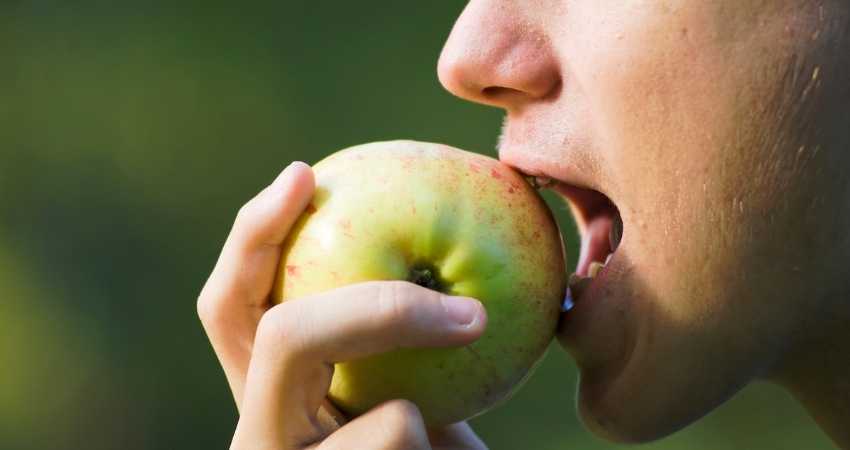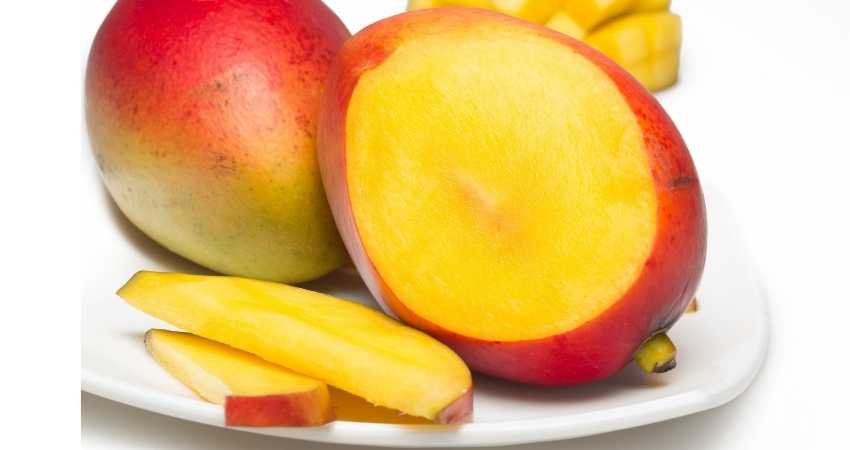Mango Skin Magic – Can You Eat Mango Skin?
If you enjoy Mango, you are probably considering using the skin. Before you can even start thinking of that, you will probably wonder, can mango skin be eaten?
Mango skin can be eaten and used for many different reasons. You can eat Mango skin as is or use it in cooking recipes to add some great flavors to your dish. It might not taste great when eaten alone, but Mango skin contains important vitamins and antioxidant properties. It also has a wealth of fibers great for health.
Want to know all about Mango skins and its secrets? You have come to the right place. We are going to look at what the skin1 offers, the best ways of eating it, and much more. So, for everything you need knowing, keep reading.
Are Mango Skins Edible?

As a Certified Health Coach many clients ask me about healthy fruit including mangos. Also, I purchase and consume it every month. Therefore, I have researched this topic in the past and present. Let’s examine the topic closely.
Mango skins are indeed edible and can be used for a lot of different cooking recipes. You can eat Mango skin as is or use it in cooking recipes to add some great flavors to your dish.
If you eat Mango skins as is, it will taste bitter and it might throw you off of eating them again. That is why you might want to find creative ways of eating the skin but we will get into that further down in the article.
Should You Peel A Mango Before Eating?
After finding out that Mango skin is edible, you might be considering just eating a whole Mango as is, except the pit of course. There is a question to be asked though, is this the right way of eating Mango skin or should you peel the Mango first?
You do not have to peel the Mango first before eating it. You can eat it with the skin if you like but if you do, there are two ways of looking at it, both have the same result.
The Mango can make the skin taste better, or the skin can make the Mango taste worse. Whichever way you look at it, the Mango will not taste as nice with the skin on.
If you are more concerned with nutritional value than flavor, then eating the Mango with skin on is a good option for you. This is especially true if you are in a rush and just want to eat quickly.

The 3 Best Ways Of Eating Mango Skin
Ok, so you have peeled a Mango and are wondering what you should do with the skin. Well, We have 3 great ways in which you can prepare the skin.
Disclaimer: Some links in this article are affiliate links which means I may earn a small commission at no extra cost to you. As an Amazon associate I earn from qualifying purchases.
Dry Mango Skin
For this, you would be best off with a food dehydrator. Simply dehydrate the Mango skin, package it and enjoy. Doing this removes a lot of the acidity of the skin and improves its flavor.
Dried Mango skin is a good substitute for unhealthy snacks. It tastes good, the texture is fine and it has all the nutrients we need. This is much better than what junk food offers.
Amazon is a great place to locate affordable food dehydrators. Check them out here, food dehydrators.
Use Mango Skins As A Spice
Yep, you read that right. Using Mango skin as a spice is really easy to do and can add great flavors to your food, especially stews.
Once you have dried the Mango skin, crush the skin until it forms a powder. Now you can use it on its own or make your own spice with it. Don’t be scared to get creative with this one.
Use Mango Skin In Juices
If you are a person that likes making their own fresh fruit juice, a little bit of Mango skin can be a healthy ingredient to add.
You could also shave some fresh Mango skin into your cocktails. Your friends will thank you but don’t forget to tell them where you got the idea when bragging to them about it.

Are Mango Skins Poisonous to Eat?
The Mango skins themselves are not poisonous, but they could have toxins on them. The toxins can be residual from the farm or distributor.
The toxins can be things like ripening agents and wax that gets left on the Mango during the growing process2. You could take extra precautions such as washing the skin before you eat it.
Who Should Not Eat Mango Skin
Prior to eating anything new or changing your nutrition plan, always consult with a physician first.
In addition, anyone with pre-existing health problems should always speak to their doctor before trying anything new, especially if they are concerned at first. This includes people with:
- Diabetes or pre-Diabetes.
- Pregnant women.
- People with low blood pressure.
- People with mango allergies.
- People allergic to poison ivy3.
- Everybody
3 Great Benefits Of Eating Mango Skins
Even though you might not enjoy the taste of Mano skin, you might still want the benefits and there are a lot. I will be focusing on the 3 benefits that stand out to me the most.
Eating Mango skin is a natural way of getting nutrients and antioxidants into our bodies. The benefits include anti-aging properties, the Mango skin is great for your skin, and eating them can help with weight loss. Let’s get straight into it. One cup of raw mango contains the following nutrients:
- Vitamin A – 25% DV
- Vitamin C – 76% DV
- Vitamin B6 – 11% DV
- Fiber – 12% DV
- Vitamin E – 9% DV
Mango Skin Is Good For Your Skin
You will have seen a few products claiming they have certain benefits as they contain Mango skin plus other ingredients. How true is this, though? Are people just trying to cash in on a trend or do their products actually do what they say they do?
Mango skin contains Vitamin C, Vitamin A and a wealth of antioxidants4. All of those properties5 make Mango skin, great for your skin. It helps preserve the elasticity of your skin and it helps prevent blemishes and/or spots on the skin from sun6.
Mango Skin May Help With Weight Loss
Losing weight becomes a priority for many people at some stage of their life. It is about being healthier and more fit. There is no substitute for exercise and a good diet, but some things can assist.
I discuss Mango and weight loss in detail in my blog post, Can Mango Make You Fat? Mango Myths & Facts Revealed.
Mango skin contains all the great nutritional value of the Mango fruit itself but without the high sugar and carbohydrate content7. That means eating mango skin can be used as a snack by people who are looking to lose weight.
If you have any questions to ask me about this article don’t hesitate to comment below or email us. You can find an email on our contact page.
Read Next – More Anti-Aging Foods!
A Mango Taste Guide From Bitter to Sweet
How to Forage Black Walnuts: The Complete Guide
- National Center for Biotechnology Information: Evaluation of processed green and ripe mango peel and pulp flours in terms of chemical composition, antioxidant compounds and functional properties [↩]
- National Center for Biotechnology Information: Monitoring of Pesticide Residues in Commonly Used Fruits and Vegetables in Kuwait [↩]
- Fruits and Veggies: Are mango skins safe to eat? [↩]
- NutritionData: Mangos [↩]
- National Center for Biotechnology Information: Mangifera Indica (Mango) [↩]
- National Center for Biotechnology Information: Protective effect of mango against UVB-induced skin aging in hairless mice [↩]
- National Center for Biotechnology Information: Chemical Composition of Mango Fruit: Nutritional and Phytochemical Compounds [↩]
